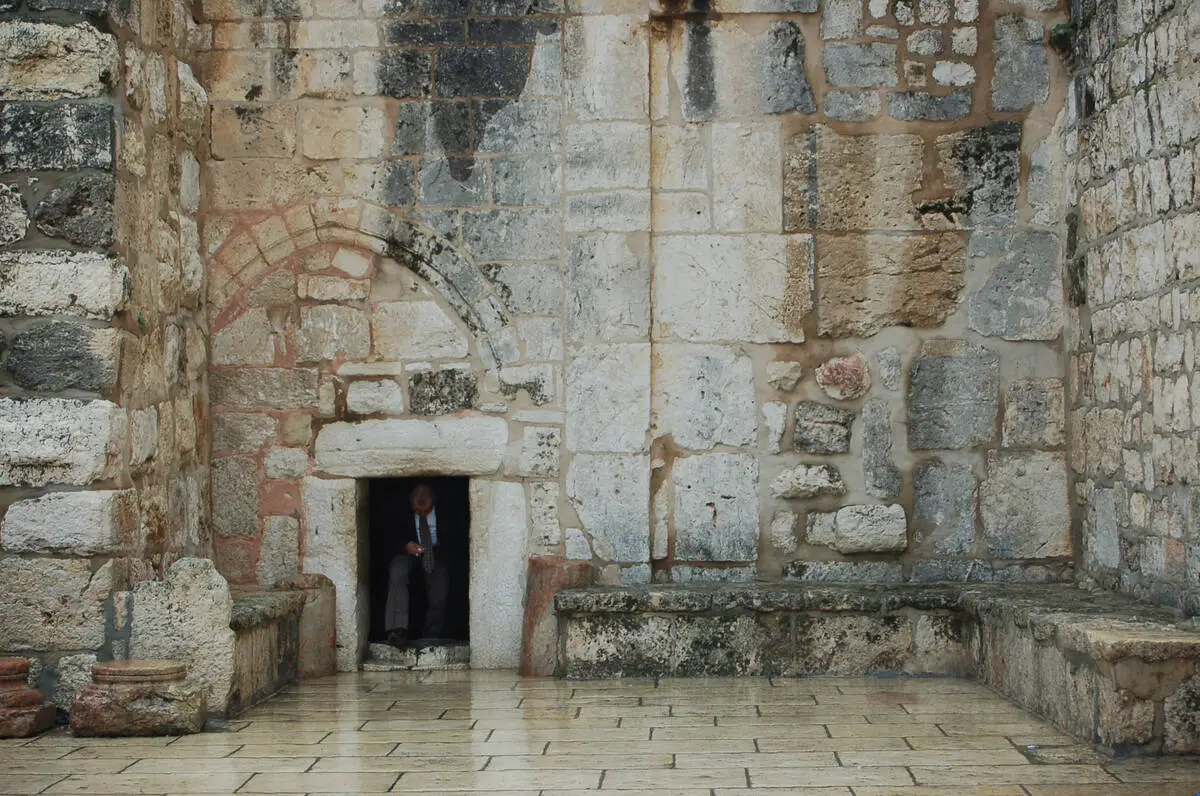Churches 🢔 Religious architecture 🢔 Architectural wonders 🢔 Categories of wonders
Wonder
Etchmiadzin Cathedral
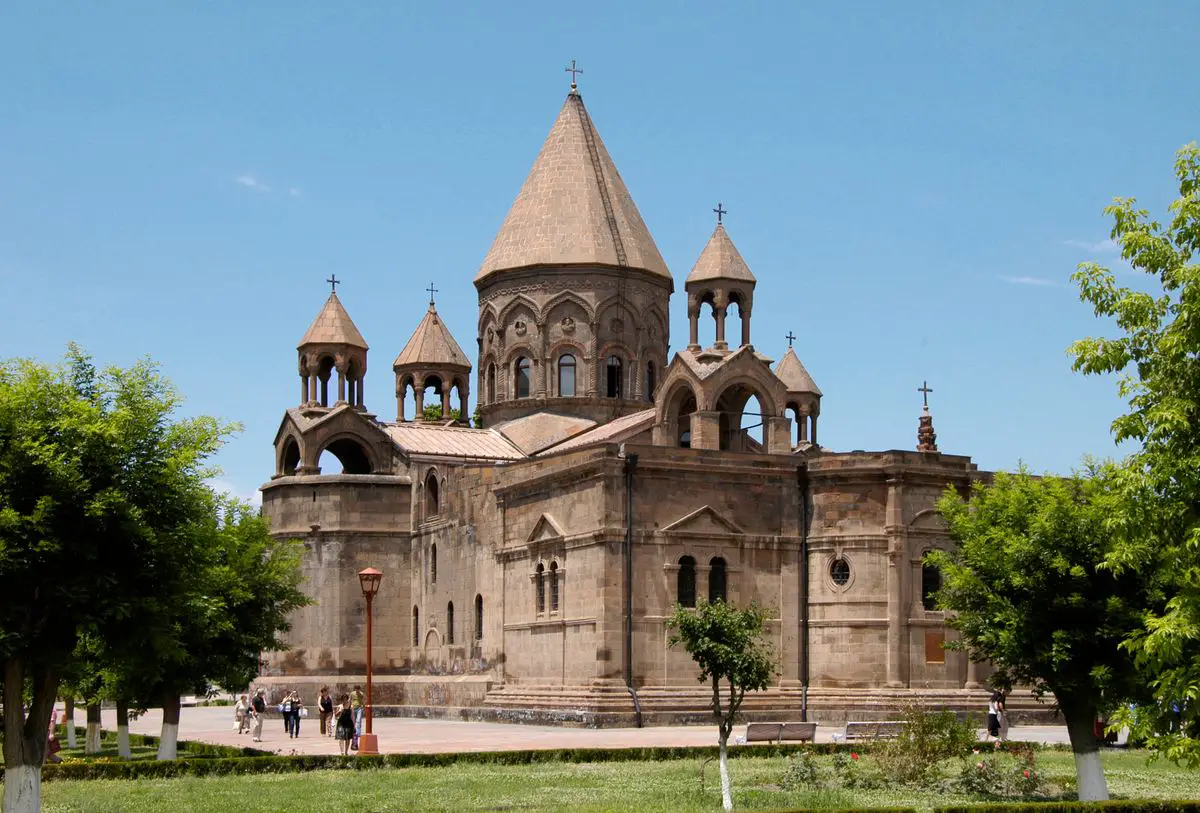
 In short
In short
The main church of the Armenian Apostolic Church and, possibly, the oldest cathedral in the world is Etchmiadzin Cathedral. The first church there was built in 301-303 AD.
 48.0%
48.0%
GPS coordinates
Location, address
Name in Armenian
Alternate name
Year of construction
Branch of Christianity
UNESCO World Heritage status
Map of the site
If you see this after your page is loaded completely, leafletJS files are missing.
 In detail
In detail
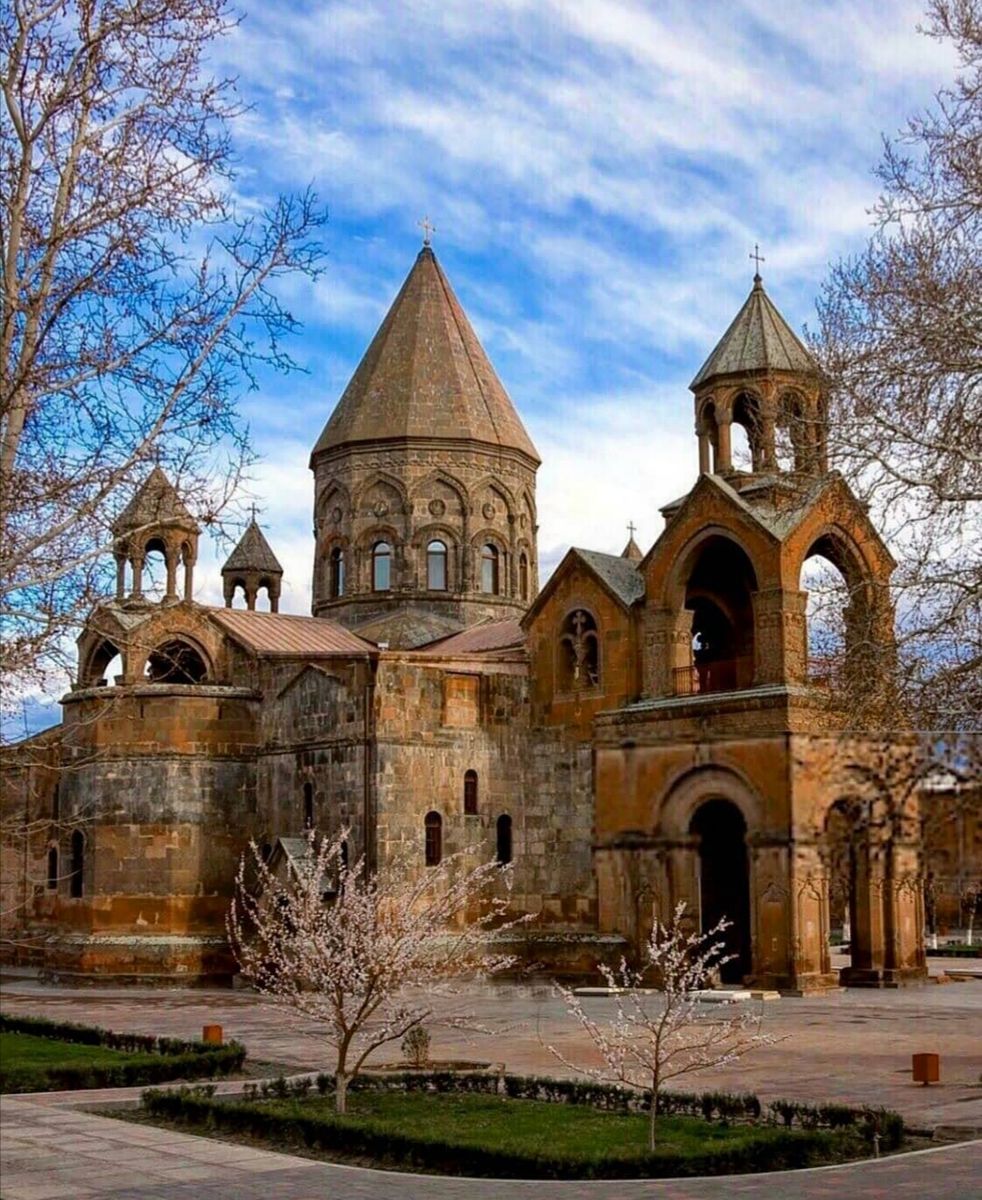
The main religious center of Armenian Christianity is Etchmiadzin Cathedral – an outstanding building that is more than 1700 years old! This ancient structure serves as a pilgrimage center for Armenians worldwide.
History of Etchmiadzin Cathedral
Church was built in Vagharshapat – an ancient settlement that has existed without interruption since the Stone Age. The oldest mention of Vagharshapat is from the times of Urartian King Rusa II (685-645 BC). Vagharshapat has various names: Kuarlini, Artimed, Vardgesavan, and Etchmiadzin. The last name was the official name of the city from 1945 to 1995 and is frequently used up to this day.
- 120-330 AD – Vagharshapat was the capital of the Kingdom of Armenia (with some interruptions linked to the Persian occupation). Most likely, Christianity was well present in Armenia at this time (and even earlier), competing with the Armenian tradition of Zoroastrianism.
- 301 AD – during the reign of Trdat III (Tiridates III) Christianity became the state religion in Armenia. Thus Armenia was the first state in the world that became Christian. Trdat III (Tiridates III) was a highly educated king of Armenia who grew up in Rome. After driving out the Persian invaders, he reinstated Vagharshapat as the state capital in 298 AD. An additional detail that illustrates the new religion’s powerful message is the fact that St Gregory the Illuminator – the main inspirer of the new faith in Armenia – was the son of the killer of Trdat’s father. Initially, Tiridates III put Gregory in a prison – in a deep pit in Khor Virap where the young man spent some 12 – 14 years. Sister of Tiridates III – Khosrovidukht – persuaded him to release Gregory. Both men decided to leave the dramatic past behind.
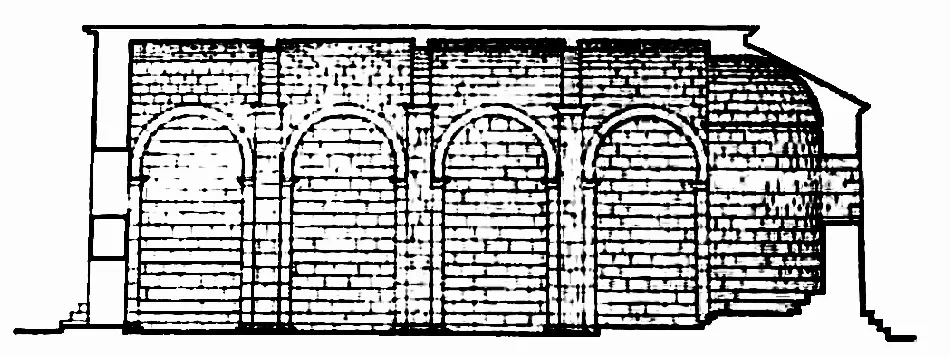
The possible cross-cut of the original Etchmiadzin Cathedral, 4th century. / Alexander Sahinian, Wikimedia Commons / CC BY 2.5 - 301-303 AD – in order to symbolize the transition of Armenia to Christianity, the main temple for the new religion – a cathedral – was built in the Armenian capital Vagharshapat over the site of the former pagan temple. Meanwhile, St Gregory the Illuminator continued his missionary activities in the mainly Zoroastrian country, and, simultaneously or slightly later, several more churches were constructed. Armenians, similar to other cultures later, incorporated their ancient traditions into the new religion, creating a unique branch of Christianity – the Armenian Apostolic Church. These events marked the split of Armenia from the influence of the Persian cultural realm. At the same time, Armenians had also to fight against the Roman Empire in 312-313 AD.
- Around 363 – the Etchmiadzin Cathedral was almost completely destroyed by Persians.
- 370ies – the cathedral was partly rebuilt.
- 450 – a fire temple was built inside the cathedral in an attempt to reintroduce Zoroastrianism in Armenia.
- 483/484 AD – in the site of the first church a new one was constructed by Vahan I Mamikonian – a local governor of Persian Armenia. Basically, this is the contemporary Etchmiadzin Cathedral, although later the structure was significantly rebuilt. The northern and eastern walls of the current church are from the 5th century AD.
- Further centuries – the cathedral was gradually neglected, and the center of the Armenian Church was moved to Dvin.
- 1441 – the cathedral regained the high title of catholicosate, e.g. this is the main church building in Armenia.
- 1441-1443 – renovation works of the cathedral.
- 1604 – Persians under Shah Abbas I plundered the cathedral, and a major part of Armenians were deported to Persian provinces, mainly New Julfa in Isfahan.
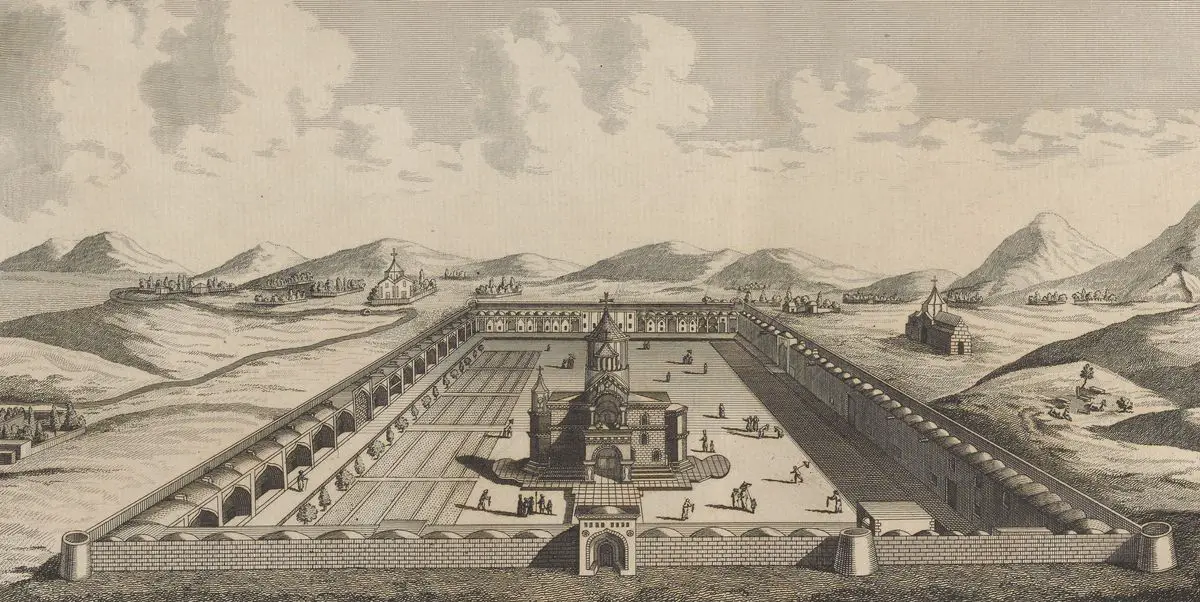
Etchmiadzin Cathedral in 1670ies. / Jean Chardin, Wikimedia Commons / public domain - 1627 – Second half of the 17th century – major reconstruction and extension of the building, belfries were constructed. Learning from the past, a wall was built around the cathedral and it became similar to a fort.
- 1868 – sacristy was constructed at the east end of the Etchmiadzin Cathedral.
- 1916-1918 – the cathedral became an important center for refugees – Armenians who escaped the genocide in Turkey. Turkish forces endangered Etchmiadzin as well but the Armenian forces successfully repelled them.
- 1955-1956, 1959 – archaeological excavations led by Alexander Sahinian, renovations of the church. The fundament and planning of the original church were explored.
- 2000 – 2003, 2021 – now – renovations of the cathedral.
Values
Planning
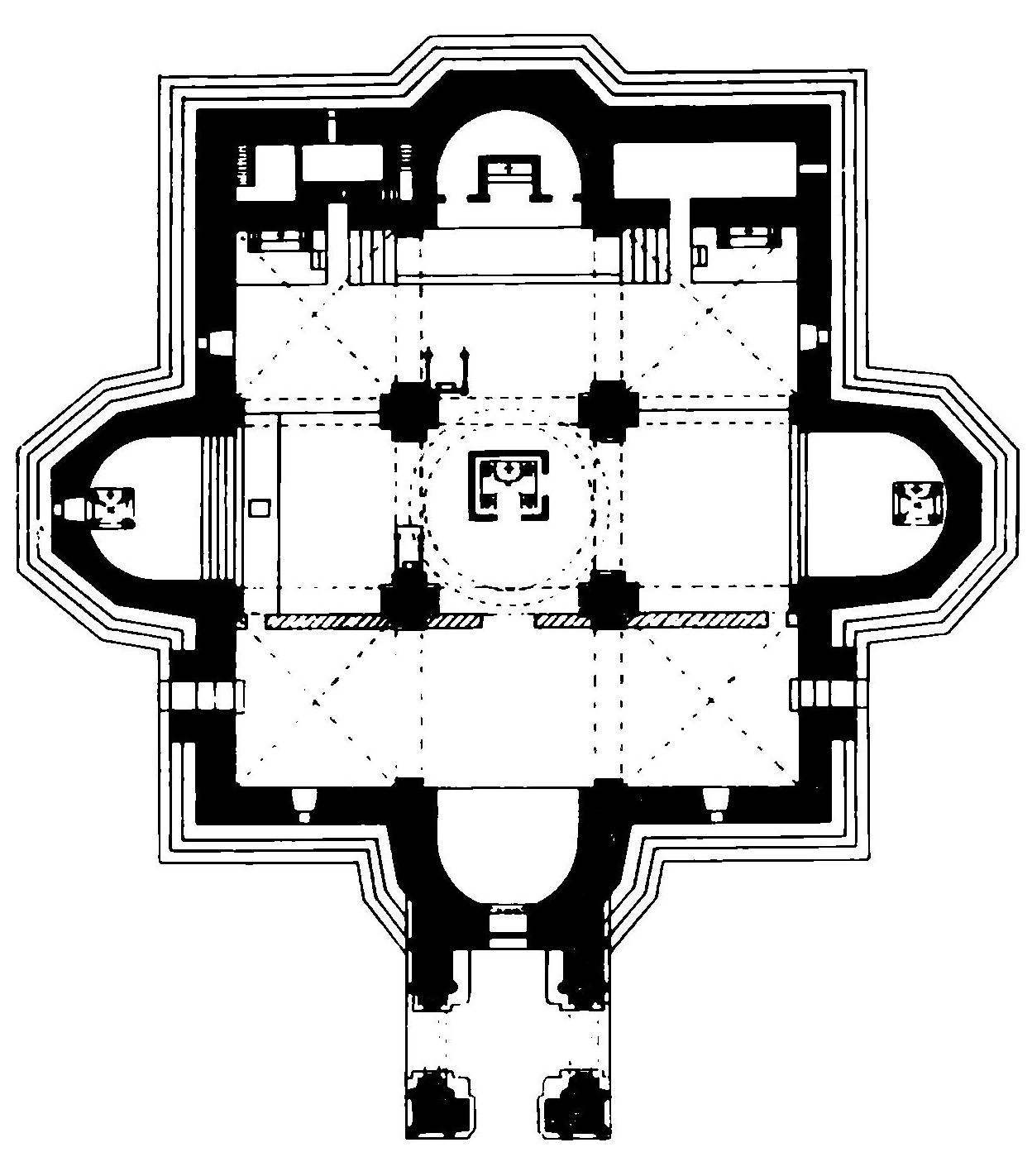
The planning of Etchmiadzin Cathedral was unusual for its time. Over the centuries there were numerous rebuildings but the planning principle from the 5th century has been retained: the central part of the cathedral is a large cubicle with four piers inside, dividing this cubicle into nine square compartments. A massive tower with a pyramidal roof over it was added in the 17th century.
The origin of this planning had roots in the rich architectural heritage of this region – the church planning, most likely, was inspired by the architecture of Zoroastrian fire temples as well as Roman classical mausoleums.
It seems that this planning approach influenced also the planning of some early medieval church buildings in Europe as well, including the famous Palatine Chapel of Aachen in Germany. Armenians assume that the influence is even larger: they consider that the worldwide tradition of cruciform churches with a dome/tower in the center originated in Etchmiadzin.
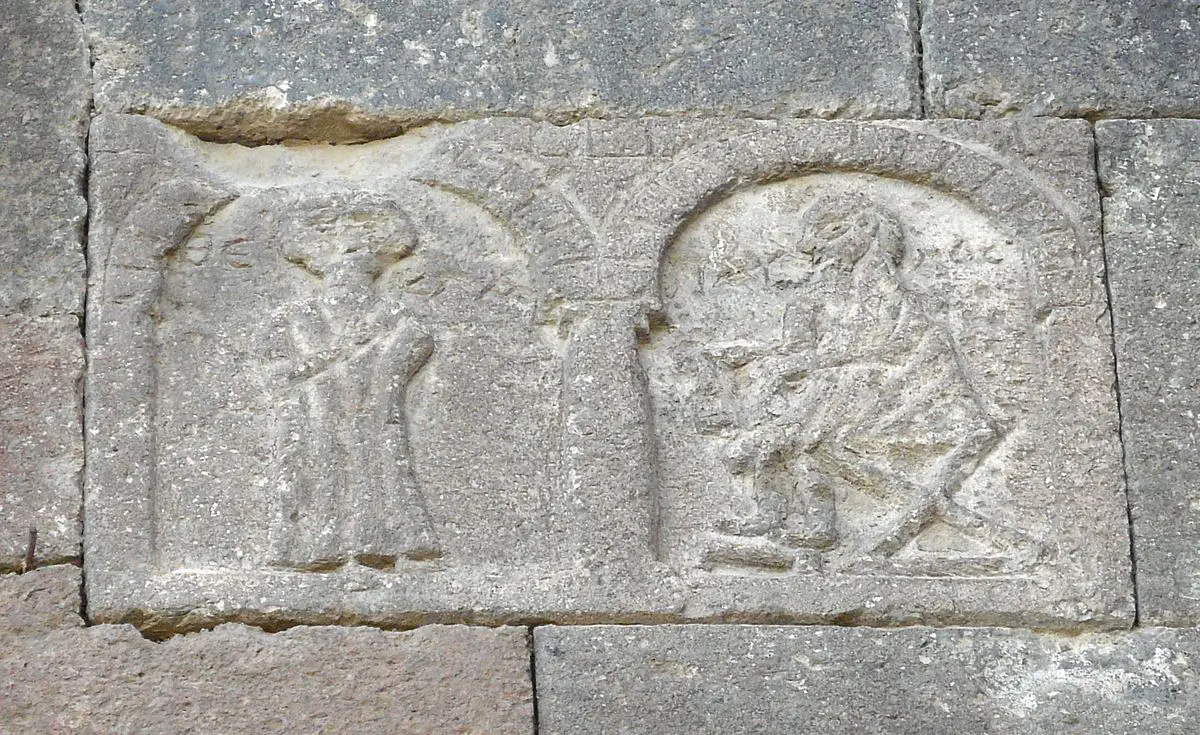
Otherwise the exterior of this ancient church is not that extraordinary – the structure, in general, is rather ascetic and it is also not especially large. An interesting feature, though, is a relief of Paul the Apostle and Saint Thecla, which, most likely, was created in the early 4th century and belong to the world’s most ancient values of the Christian art.
The medieval cemetery around the Etchmiadzin Cathedral has many ornate khachkars – traditional Armenian stone crosses.
Frescoes
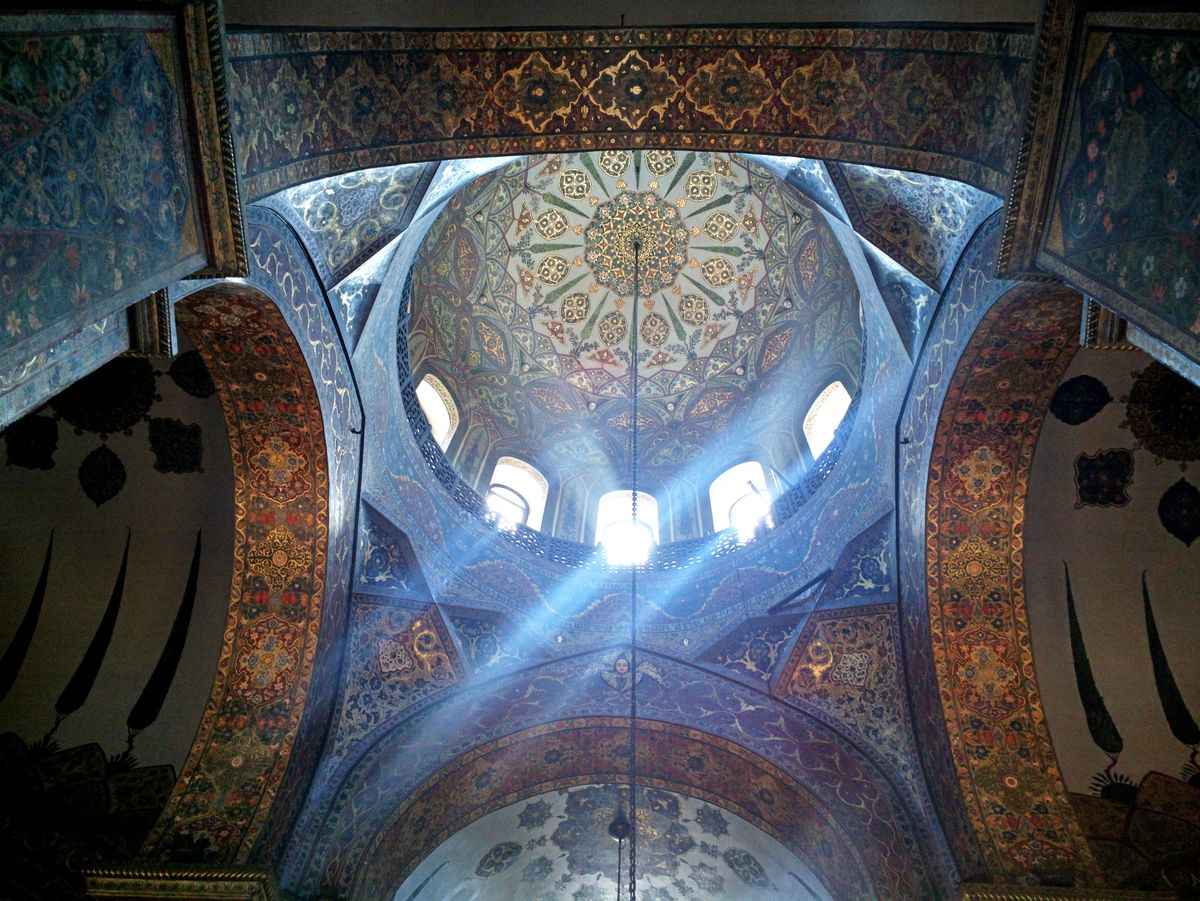
A special value is the original paintings of the interior – frescoes. These were painted by Naghash Hovnatan in 1712-1721. Paintings were made directly on the surface of the marble inside the dome and the main apse.
Further frescoes were created by Hakob and Harutyun Hovnatanyans (first half of the 18th century) and Hovnatan Hovnatanyan (second half of the 18th century), Mkrtum, and Hakob Hovnatanyans in the 19th century.
Hovnatayan family had an outstanding role in the history of Armenian culture: they were outstanding poets, singers, and, above all, painters.
References
- The Armenian Church, the official site. Accessed on May 29, 2022.
Etchmiadzin Cathedral is included in the following article:
 Linked articles
Linked articles
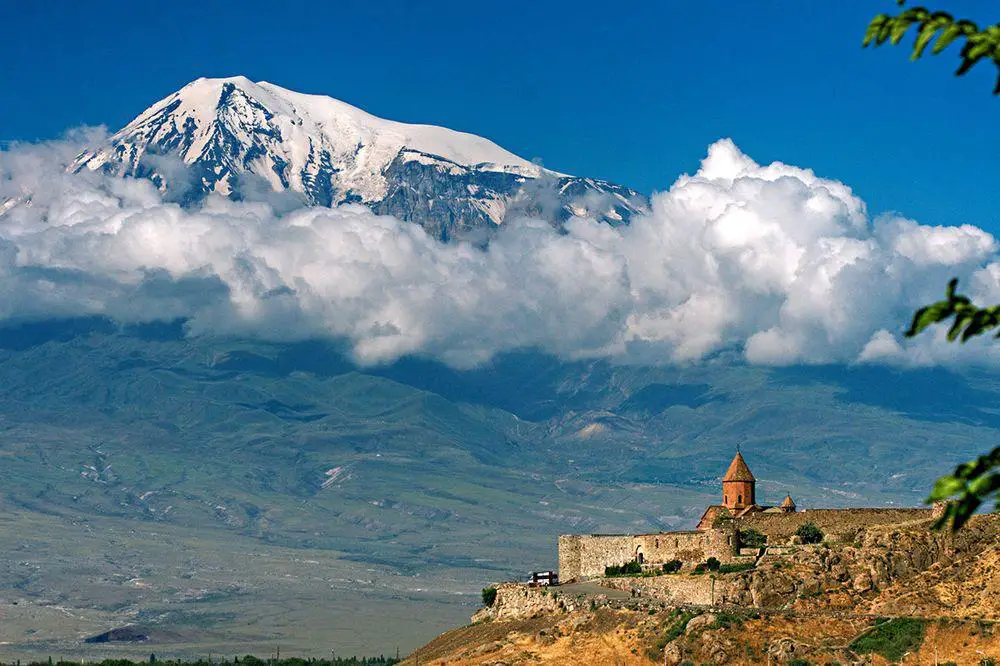
Wonders of Armenia
In spite of its small size Armenia has quite a few surprising landmarks. Highlights of this country are some of the oldest churches and Christian monasteries in the world and interesting archaeological heritage, such as cyclopean fortresses, megaliths, and cliff carvings.
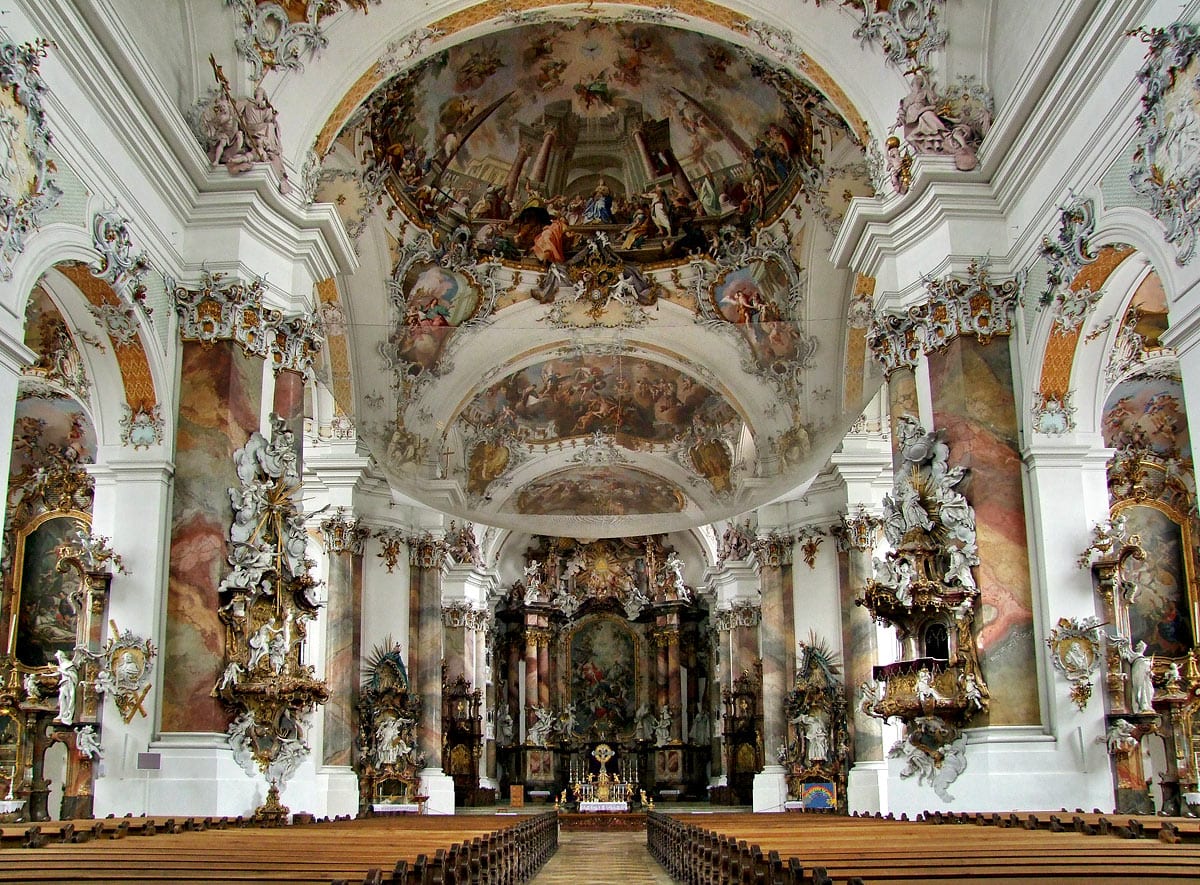
Churches
Throughout the millennia Christian churches have been the epitome of architecture and arts achievements in Western culture.
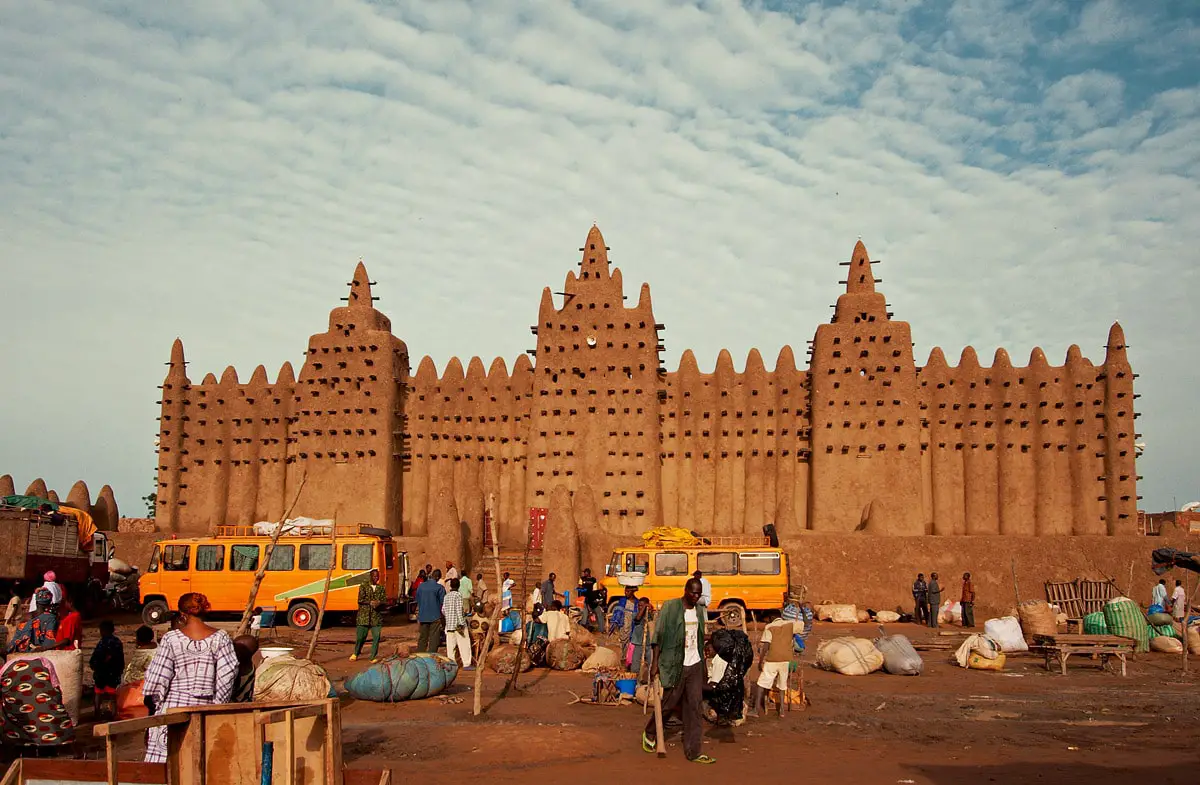
Religious architecture
Since ancient times human talents and skills have been expressed in religious architecture and arts, and traditions and rituals have evolved around pilgrimage sites. Religious buildings represent a major part of the highest achievements in architecture and crafts.
 Recommended books
Recommended books
Armenia: Kingdom of Eternity
Armenia: Kingdom of Eternity is a collection of photographs illustrating the natural beauty, architecture, and art of one of the world’s most remarkable civilizations. Armenia is a land of great beauty and mystery. It is also one of the earliest homes of humanity, with a human presence dating back over 1.2 million years. This book offers glimpses of its elegant and ancient culture.
The Art of Armenia: An Introduction
Armenia has a material history and visual culture that reaches back to the Paleolithic era. This book presents a timely and much-needed survey of the arts of Armenia from antiquity to the early
eighteenth century C.E. Divided chronologically, it brings into discussion a wide range of media, including architecture, stone sculpture, works in metal, wood, and cloth, manuscript illumination, and ceramic arts.

